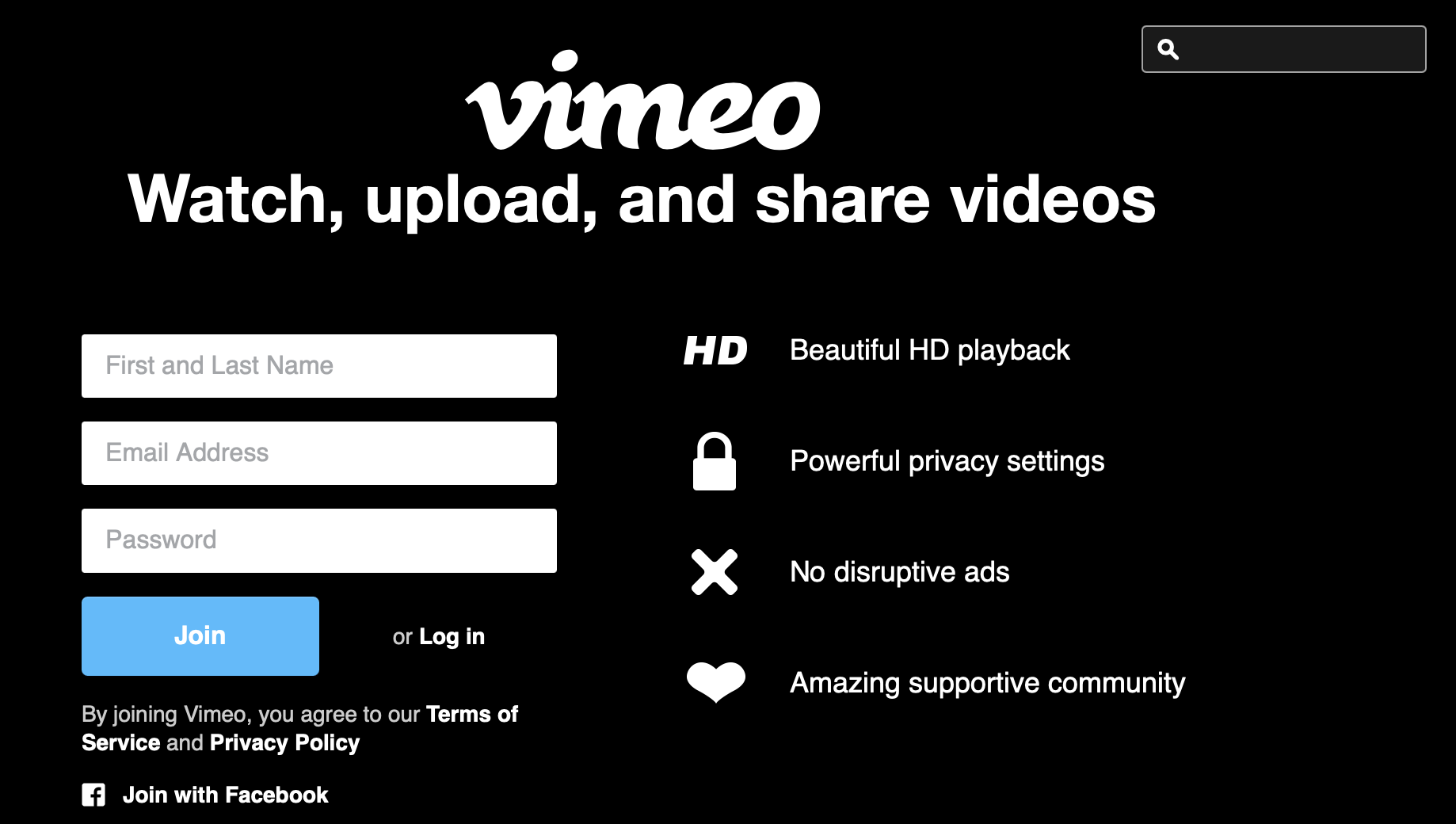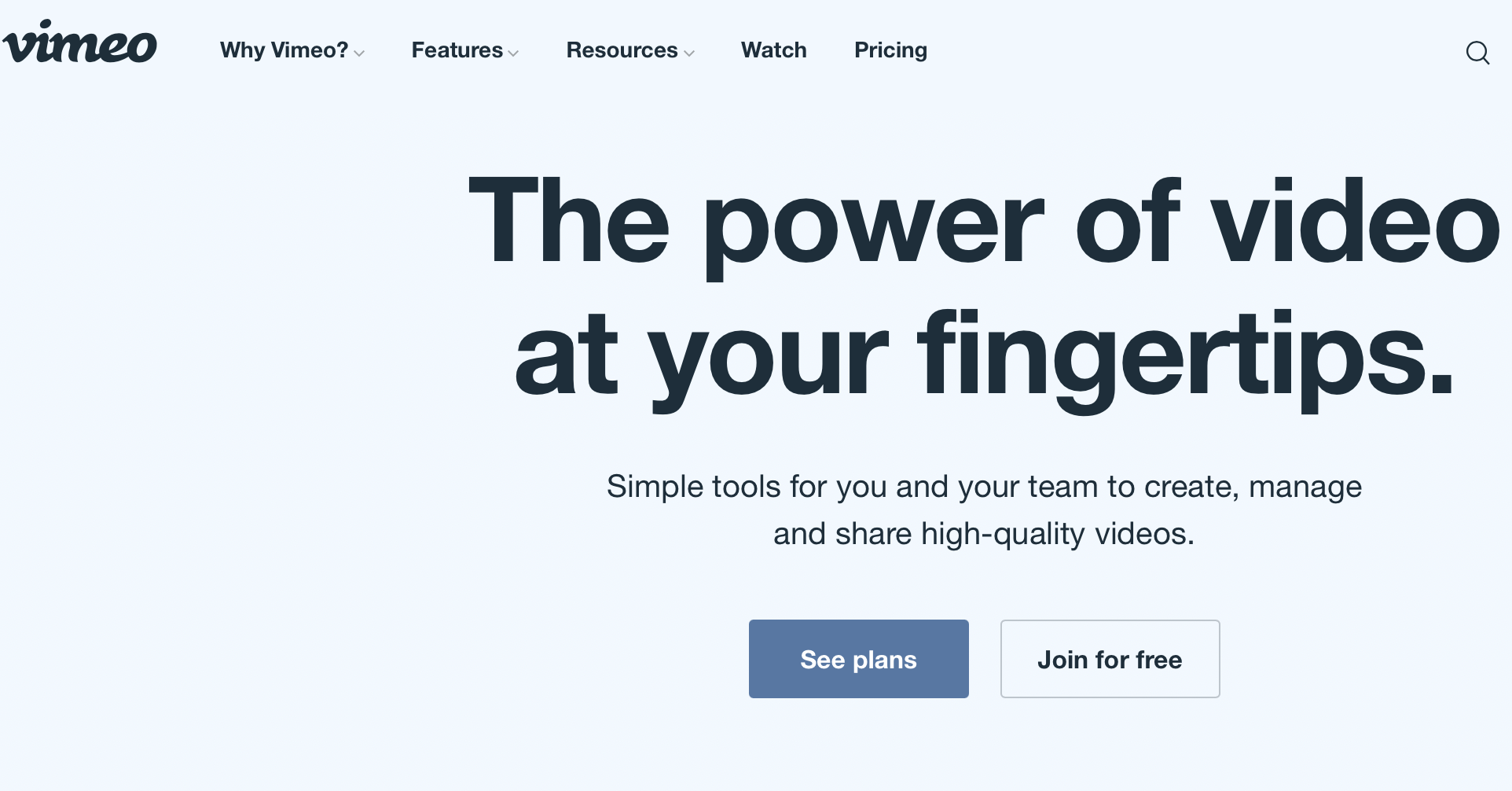Vimeo and the Consumerization of B2B Tech
30 Apr 2021What Vimeo’s imminent spin-off from IAC demonstrates about the latest trends in business-to-business software.
Vimeo is about to go public (spinning off from its parent, IAC), and has started rebranding itself for investors.
Its current positioning: Vimeo provides businesses of all sizes with tools that enable the most effective creation, deployment and use of online video. This is a big change from where the company was until recently. As stated by CEO Anjali Sud, in the company’s Investor Day video:
In 2017, we executed a bold pivot. We went from being a place to watch videos to a technology solution for every business in the world, from the ad-free alternative to YouTube to a B2B SaaS company…Over the last 3 years, we’ve moved aggressively to build innovative products and a full-suite solution that, today, is serving the video needs of the smallest business, all the way up to the largest enterprise.
You can see these differences at a glance by looking at the 2014 version of the Vimeo homepage and at the current version.
2014

If you read all the way to the bottom of the 2014 home page - you will see links and references to “Vimeo Pro” and “Vimeo for Business.” From early days, the business was known in the filmaking and digital photograpy communities for HD video (when that was still unusual) and for maker tools.
2021

And on the 2021 home page, if you look across the top ribbon, “Watch” is the second-to-last item. That’s where you can find short videos and full-length movies. Some are viewable without charge while others require payment or subscription. So even the 2021 business-enablement Vimeo has items consumers can use. They are just more difficult to find.
In many ways, this is a classic pivot from b2c to b2b. Vimeo found it difficult to compete as an advertising-supported mass-market website competing with YouTube, Instagram and Snapchat. Instead, it is doubling down on its aptitude for building creator tools. And to the extent that it still hosts video for consumers, it relies on the filmakers, photogaphers and others to bring their own audience.
But another way to look at the pivot is that Vimeo is reflecting the demand for better b2b tools. Tools to enable professional video have existed for many years. Adobe Premiere Pro is a prominent example. But those tools like those from Adobe are expensive and “heavy” (in many ways - long sales cycle require lots of training, etc). As CEO Sud said in a podcast interview, “If you actually look at who uses Adobe Premiere Pro, it is professional video creators, it’s filmmakers; there’s a 500-page training manual for how to use Adobe Premiere Pro.”
Vimeo, on the other hand, is something that an intern in a corporate communications department can use to record, edit and post a video in a few hours on the free “Basic” plan. If the department head likes the result, she can use a credit card to buy a “Plus” or “Pro” subscription. If the company wants to graduate to more advanced capabilities, it can contact Vimeo’s enterprise sales team. This illustrates how, in today’s rapid business cycle, businesses and their employees are demanding tools that are just as user-friendly and easy to adopt as the applications they use in their personal lives.